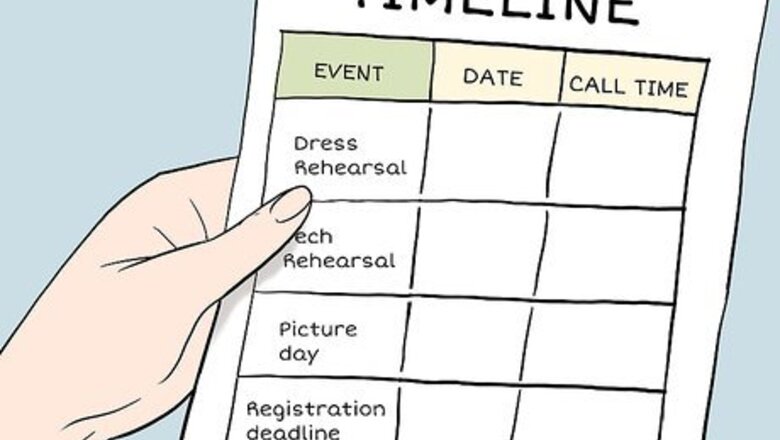
views
Sorting out the Practical Details
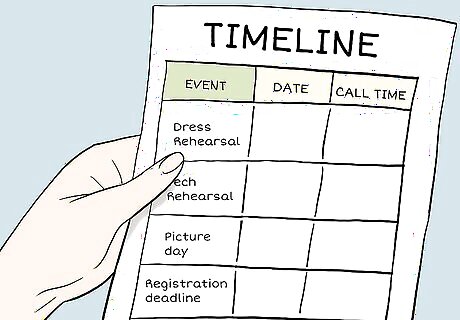
Keep a timeline on hand with important dates. As your dance show approaches, you'll need to keep track of important events like dress and tech rehearsals, picture days, registration deadlines, and of course the show itself! Find out if your instructor, coach, or studio has a schedule that you can print out, or make your own. You may find it helpful to use an app like Google Calendar to keep you on schedule.
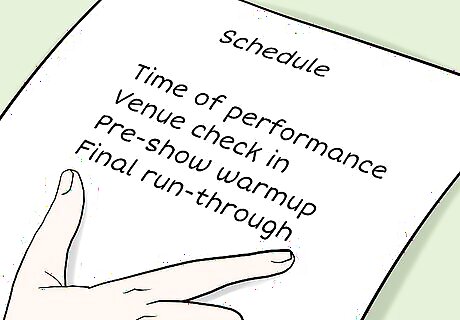
Get a schedule for the day of the show. In addition to having a general timeline for the events leading up to the show, it's also crucial to know what will be happening—and when—on the day of the show itself. For example, you'll need to know: What time the performance is happening How early to show up at the venue and check in Whether you need to participate in any official pre-show warmups or a final run-through, and if so, when At what point in the show you will make your entrance (or entrances, if you have multiple dances)

Find out about costume requirements. Most dance performances require some sort of costume, especially if you're part of a dance group. Talk to your instructor or dance studio about what sort of costume you need to wear for the show. You may need to special order your costume, so make sure to give yourself plenty of time to do that.Tip: For many dance performances, you will have to wear basic stage makeup to help you look your best under the harsh stage lights. If you have long hair, you may need to do a simple updo, like a ballet bun. Depending on the dance, you might need to order a specific costume, or you might be given a set of general guidelines to work with (e.g., “Wear a black leotard, red tights, and black tap shoes”). There may also be special requirements for hair and makeup.

Take care of any necessary fees and paperwork. There's usually some red tape involved in preparing for a dance show. To make sure everything goes as smoothly as possible, be sure to keep up with any required registration fees, costume order forms, and other odds and ends that need to be taken care of in the weeks before the show. Write down deadlines for submitting fees and paperwork in your pre-show timeline.
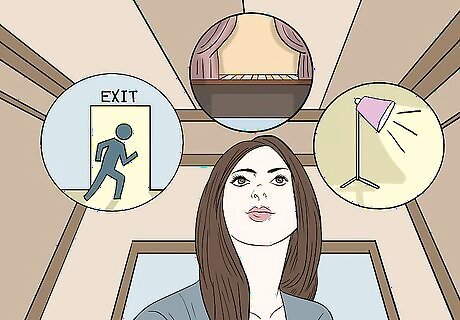
Check out the venue ahead of time if possible. No matter how much you practice, performing in an unfamiliar venue can throw you off. Even if you don't have a chance to practice on the venue stage, try to take at least a few minutes before the show starts to look around and get familiar with the space. As you're looking around, think about: Where the entrances and exits are Where you will be on the stage during your dance Whether there are any likely distractions in the space, such as bright stage lights or noise from the audience
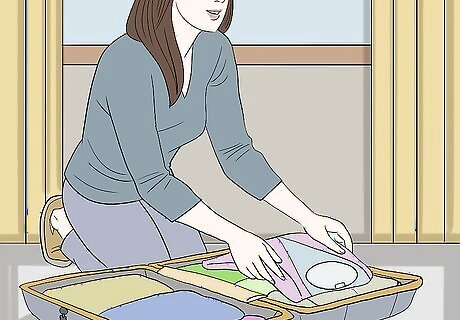
Pack a bag with your costume and other essentials. Before the show, put together a dance kit that includes all the things you'll need for your performance. You may also want to pack a few extras in case something goes wrong. In addition to your costume, shoes, and props, a good dance kit should include: Spare bobby pins and hair ties Hair styling products such as hairspray or gel A small sewing kit, safety pins, and fashion tape in case of wardrobe malfunctions Water and some salty snacks.
Preparing Physically and Mentally
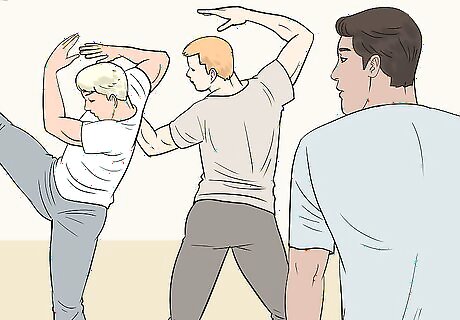
Attend every rehearsal. Rehearsals are a key part of the preparation process. Not only will attending rehearsals regularly help you master the choreography and work through any rough spots, but it will also show your instructor that you're committed and serious. Work with your instructor to identify any areas where you need to particularly focus on improving your performance. If your instructor gives you special notes or other feedback on what you're doing, write it down. This will help you remember what you need to work on both in rehearsals and on your own.
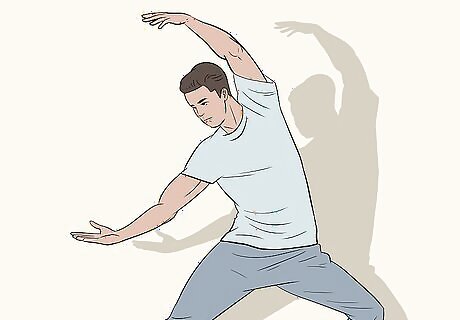
Set time for yourself to practice on your own. Practicing outside of rehearsals is key to any kind of performance. Get into a regular routine of practicing each day in the months and weeks leading up to the show. You may find it helpful to practice with a partner. That way, you can help keep each other accountable.
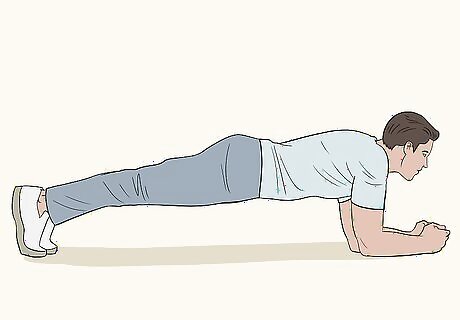
Develop a warmup routine. Warming up before you practice or perform can help prevent injuries. Before practicing, do a few minutes of dynamic stretches and exercises to get your blood pumping and limber up your joints. Try incorporating some of the following into your warmup routine: Planks Bridges Squats and lunges Banded squats (i.e., squats done with a resistance band around your knees or ankles)

Eat a healthy diet as you prepare. Eating well is vital to keeping up your strength and energy as you prepare for your performance. It's especially important to keep yourself well fed in the days leading up to the show. Stick to a balanced diet with lots of fruits, vegetables, whole grains, lean proteins, and healthy fats.Tip: Try to eat snacks rich in protein and healthy fats (like those found in fish, nuts and seeds, and vegetable oils) within 30 minutes after any rehearsal. This will help your body recover better from the exertion of practice. On the day of the performance, make sure to eat a full, well-balanced breakfast. This will help give you the energy you need to make it through the day. To stay nourished without overfilling yourself right before the show, eat multiple small meals throughout the day instead of one big one. Don't forget to stay hydrated! Aim for 2 cups (470 mL) of water the morning of the show, and keep sipping throughout the day, every 20 minutes or so.

Get a good night's sleep the night before the show. Sleeping well is key to having the energy and focus you need for a good performance. The night before your performance, get to bed early enough so that you can have at least 7 to 9 hours of sleep, or 8 to 10 if you are a child or teen. Some professional dancers or athletes find that it's best to sleep up to 12 hours before a performance. If you aren't able to get enough sleep the night before the show, try to get in a 20-minute nap during the day. To ensure you get the best sleep possible, practice good sleep hygiene by keeping your room comfortable, doing a relaxing bedtime routine, and turning off bright screens at least half an hour before bed.
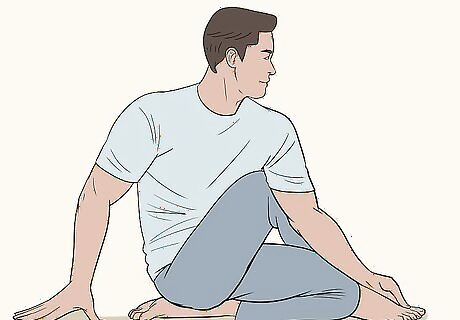
Try some relaxation techniques to cope with stage fright. It's perfectly normal to have some jitters before the show. If you feel nervous before dancing, try calming yourself by listening to a little peaceful music, doing some simple yoga poses, or doing breathing exercises. You might also find it helpful to visualize the whole performance in your mind's eye before you go on.
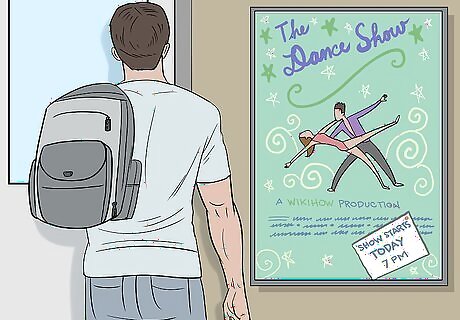
Arrive promptly for check-in and warmups on show day. On the day of the show, try to get to the venue a few minutes early, or at least right at the requested call time. This will give you a chance to check in, get settled, and scope out the venue. You can also take a few moments to go through your warmup routine one last time. Once you're at the venue, try to do a quick run-through of your performance on the stage if you can. It doesn't have to be a full performance—just focus on finding your marks.




















Comments
0 comment